Farnese, the Village of Pinocchio, lies on the top of a tuff spur within the Selva del Lamone, in the Tuscia Viterbese area, not far from Lake Bolsena. It is surrounded by ditches which served both to defend the inhabitants and to provide a perfect hideout for bandits in the nineteenth century. This Etruscan village boasts ancient churches and palaces, as well as medieval butto wells.
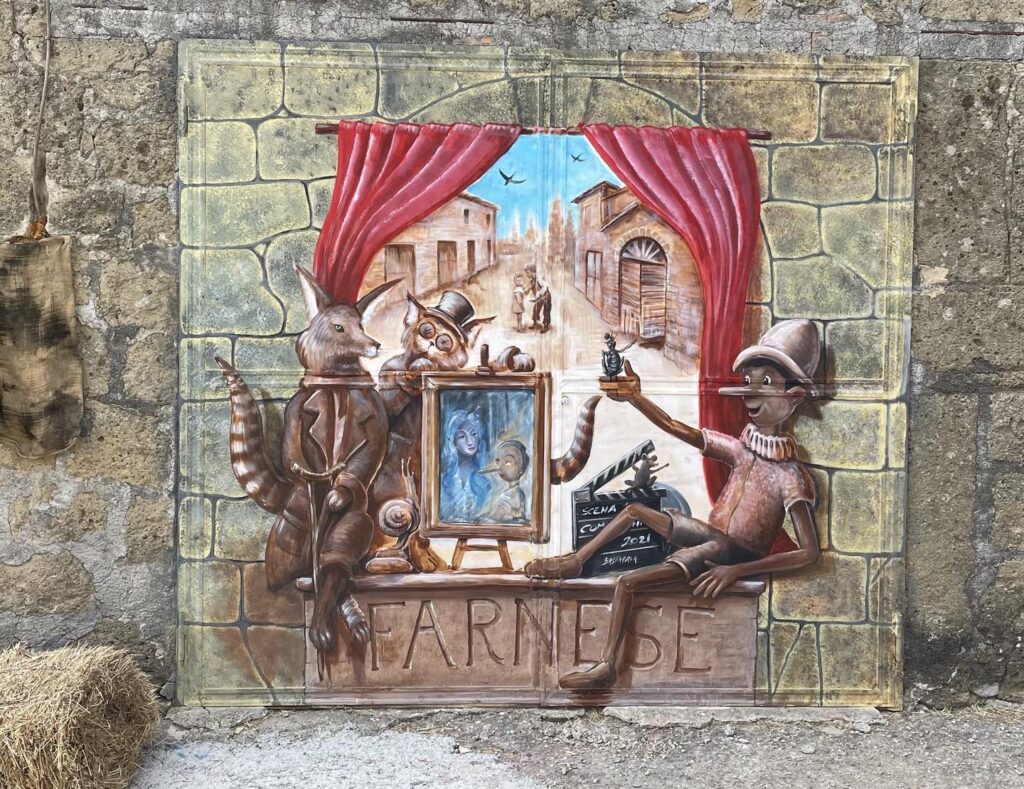
Farnese, the setting of “The Adventures of Pinocchio” by Comencini – Facebook @Associazione il Borgo di Pinocchio Farnese
Farnese has been the location of several scenes from the movie “The Adventures of Pinocchio“, the 1972 television series based on the novel by Carlo Collodi and directed by Luigi Comencini. Andrea Balestri and Nino Manfredi starred in the five episodes, playing the role of Pinocchio and Geppetto. Other famous actors were Gina Lollobrigida, as the Blue Fairy, Franco Franchi and Ciccio Ingrassia, as the Cat and the Fox, and Vittorio De Sica as the judge.
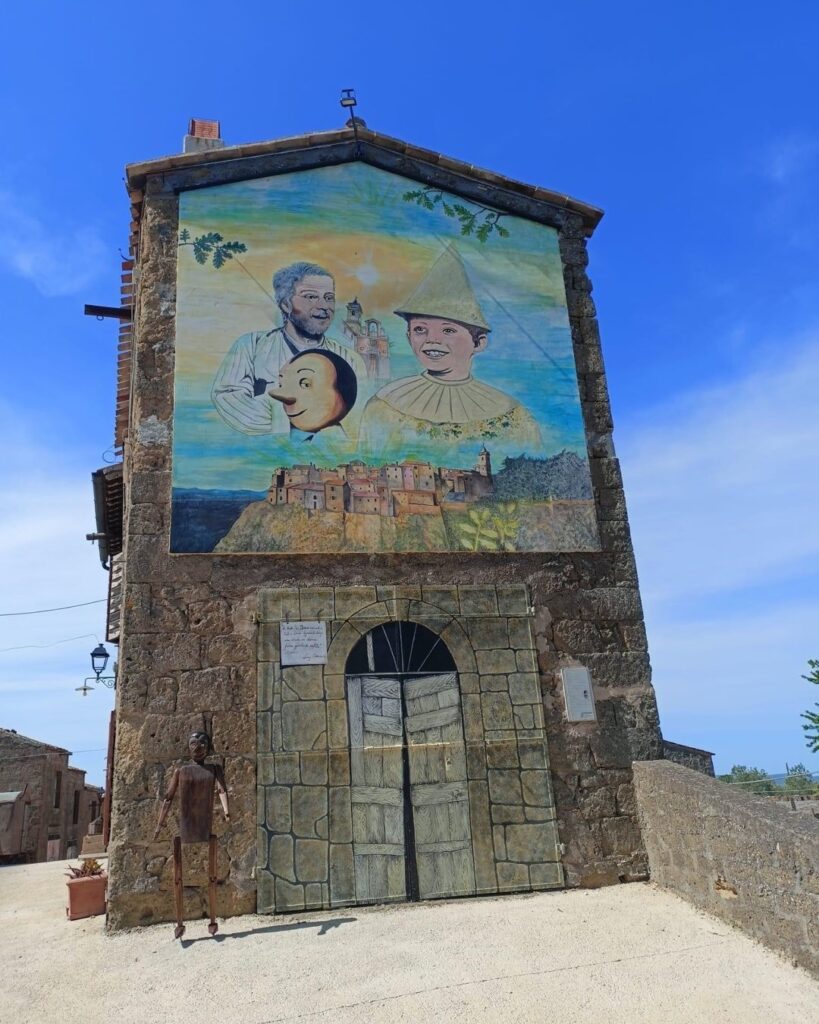
Farnese, the set of “The Adventures of Pinocchio” by Comencini – Facebook @Associazione il Borgo di Pinocchio Farnese
The itinerary retracing Pinocchio’s footsteps is divided into five stops throughout the village, each one for each scene, marked with a sign bearing a text and images from the movie. Entering the house of Geppetto and admiring the murals and installations will make you relive the stories of the long-nosed puppet.
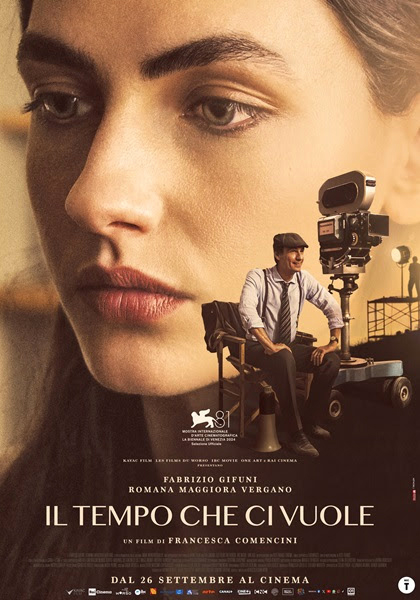
The Poster of the movie “The Time It Takes” by Francesca Comencini, filmed in Farnese
Luigi Comencini’s daughter, Francesca, director and screenwriter, also filmed in Farnese part of her movie “The Time It Takes” with Fabrizio Gifuni, in which she recalls her childhood on film sets close to her father. The film from 2024 received four David di Donatello nominations.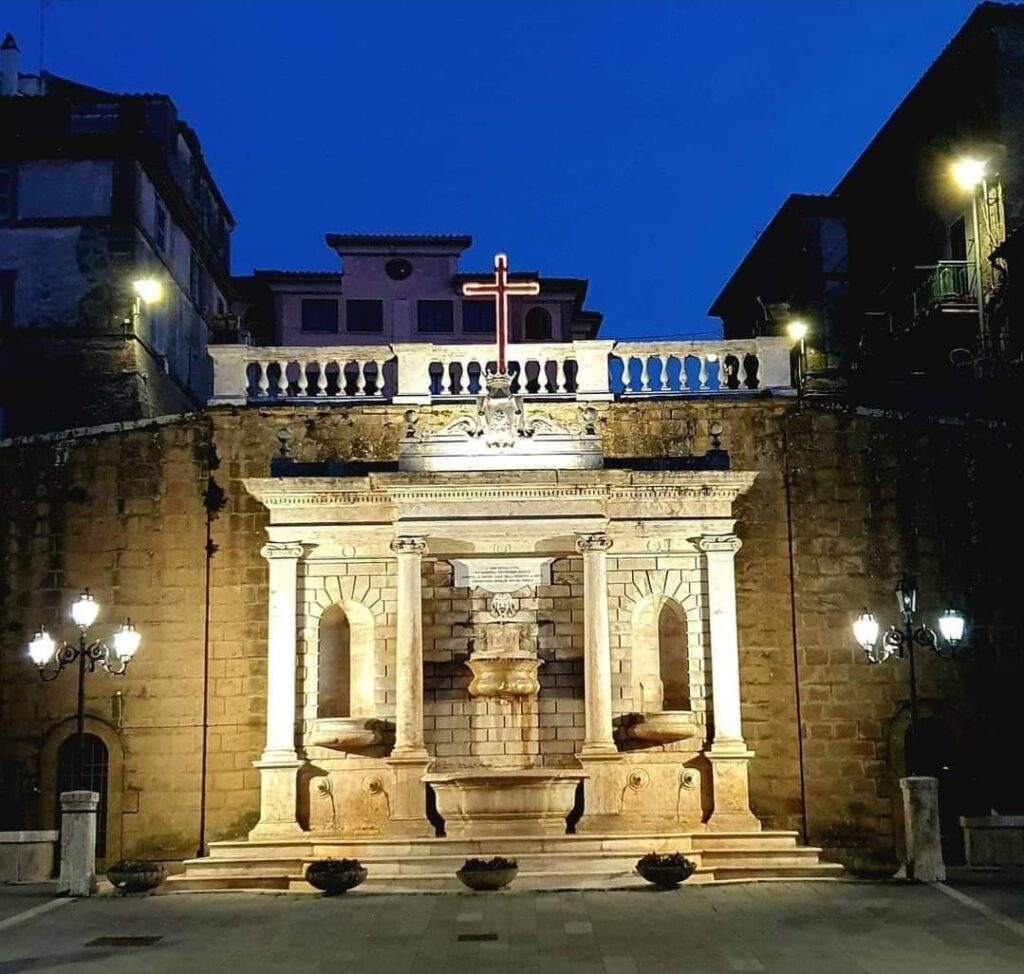
Farnese was inhabited since the Bronze Age, and, in the eleventh century, it was a castrum, dominated by noble families. In the sixteenth century, the Farnese family came to power, turning it into a Renaissance small town. The Rocca dei Farnese, a noble residence in the thirteenth and seventeenth centuries, still peeks out from behind the walls. The 1613 Porta Nuova by the architect Ettore Smeraldi connects the medieval and the Renaissance sections. The interiors of the Rocca house a chapel with a dome and the coats of arms of the families who followed one another, such as the Anguillara, the Chigi, and the Farnese. The building, today a private property, is open to visitors.
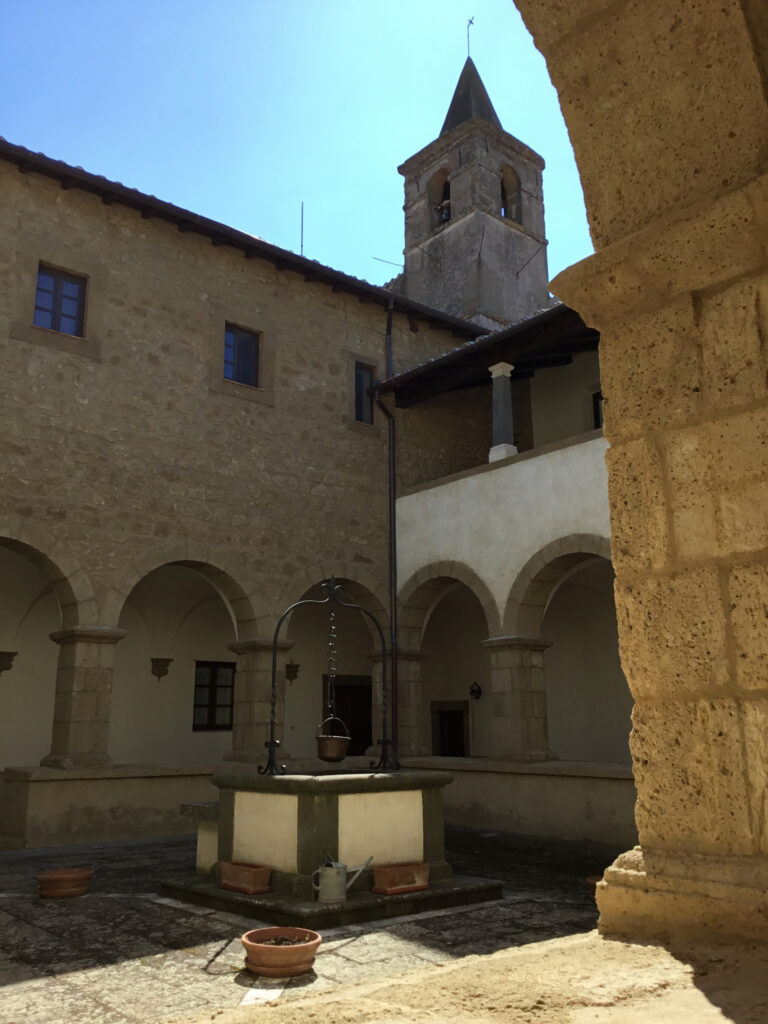
The well in the cloister of the Poor Clares’ Monastery of Santa Maria delle Grazie – www.retedimorestorichelazio.it
The complex of the Poor Clares’ Monastery and the Church of Santa Maria delle Grazie, one of the Historic Residences in Lazio, also includes a vegetable garden of approximately 5,000 square metres, the Poor Clares’ cells, and the guesthouse. The complex was built in 1560 for the Friars Minor by will of Giulia Acquaviva, wife of Pier Bertoldo Farnese.
The church houses several frescoes from the first half of the sixteenth century, one of them depicting the wedding of Galeazzo Farnese and Isabella degli Anguillara, which took place between 1514 and 1518. The scene of the “Visitazione della Madonna a Santa Elisabetta” is represented by a door, probably the entrance to the town of Farnese.
The Parrocchia del Santissimo Salvatore, built in the fifteenth century, houses many works of art, including several paintings by Anton Maria Panico and Orazio Gentileschi. Among the historic buildings, the eighteenth-century Palazzo Chigi, now the Town Hall, and the Palazzo Platonio, the former residence of the Farnese administrators, stand out.

An aerial view of the Selva del Lamone
In the mid-nineteenth century, brigands used to hide in the numerous caves around Farnese. The most famous one was Domenico Tiburzi, known as Re del Lamone, or Domenichino. He was the leader of the last robbers’ gang infesting the Maremma Laziale, renowned for robbing the landowners and helping the poor. He avoided confrontation with the Carabinieri because he considered them poveri figli di mamma (family boys).
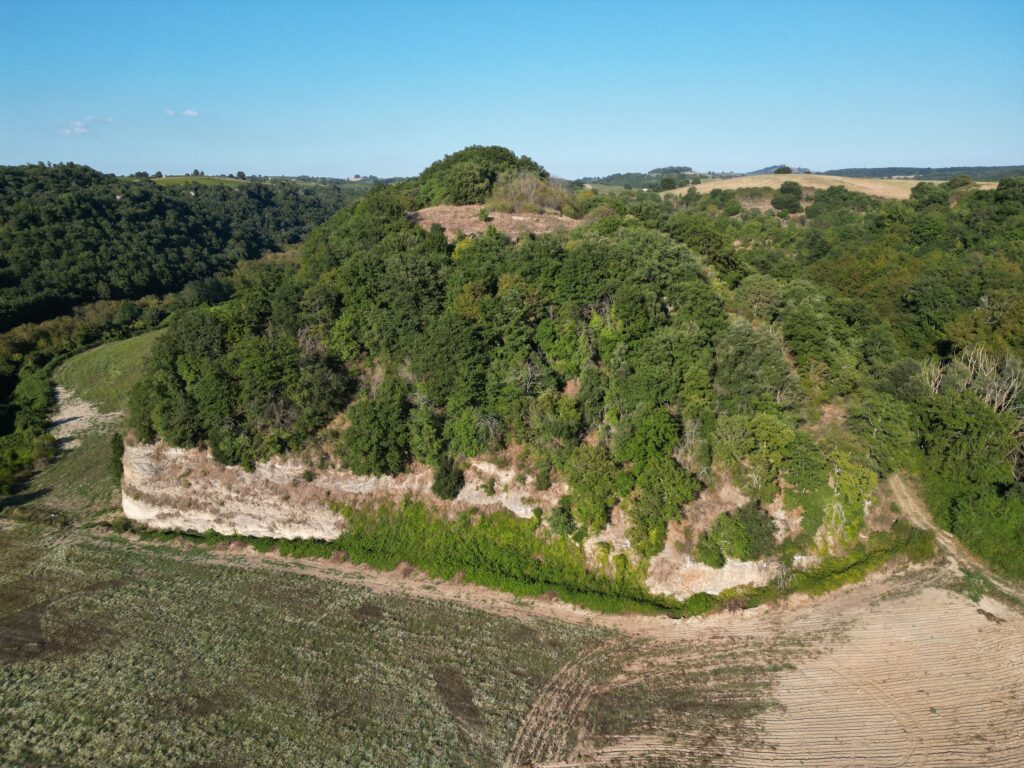
Rupe di Sorgenti della Nova, aereal view
The Riserva Naturale Regionale Selva del Lamone, a protected area of approximately 2,000 hectares in the territory of Farnese, is crossed by a main route known as the Brigands’ Path, which can be walked on foot, on horseback, by bicycle, and by car. The exploits of the bandit Tiburzi, who hid in the Selva del Lamone for decades, are still remembered today. He was protected by the inhabitants of Farnese, who lived in poverty and were burdened with taxes by the local lords. The impervious woodland was formed by a lava flow occurred from 150,000 to 50,000 years ago. Dense vegetation alternates with huge volcanic boulders and pastures. The natural reserve also preserves testimonies dating back to the Bronze Age, Etruscan, and Lombard settlements.

The Cascata del Caschetto in the Selva del Lamone
In this wild environment, two splendid cascades flow, the Pelicotonno and the Salabrone waterfalls, the latter formed by the Olpeta River. In mid-May, in the Riserva Naturale Regionale Selva del Lamone, a Spring Festival is held with guided excursions, tastings, and musical performances.
Not to be missed in the old town, are the ancient butti, large wells dug into the tuff rock, once used to store water and grain. Ceramics works found in the wells, now on display at the MuRV – Museo Civico Ferrante Rittatore Vonwiller, reconstruct the inhabitants’ daily lives of the fourteenth to the early seventeenth century.
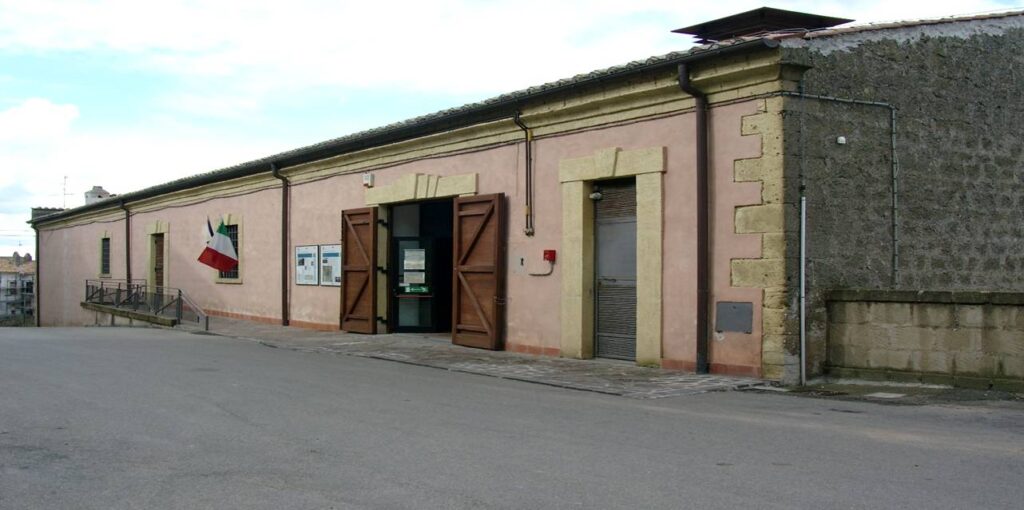
The Museo Civico Ferrante Rittatore Vonwiller
The Museo Civico Ferrante Rittatore Vonwiller is hosted in
the Magazzino dell’Ammasso, an ancient grain warehouse behind Palazzo Ceccarini-Chigi, today’s Town Hall. It displays findings from an itinerant exhibition across the Sorgenti della Nova, one of the most important Italian settlements from the Late Bronze Age. The initiative focuses on the prehistory and protohistory of the Lazio side of the Fiora Valley, that is, the Selva del Lamone and its surroundings.
One of the most important festivals in Farnese is the “Farnesiam Mensam, alla Tavola dei Farnese”, celebrated at the end of June, a food and wine experience throughout the historic centre, with tastings and sales of typical products displayed by the farmers of the ancient Duchies of Castro and Latera.
Unmissable is also the Festival del Cacciatore, which takes place in early August, where visitors will be able to appreciate typical specialities and game dishes. Other noteworthy events are the Craft Beer Festival in July and the Farnese Street Food Festival in mid-July, which also includes music performances and shows. In mid-August the Festa dell’Assunta is celebrated with historical parades, music, and tastings of local specialities, such as Acquacotta (bread and vegetable soup) and Fettuccine all’Uovo, in anticipation of the literary prize “Farnia d’Oro”, which takes place at the end of August.
